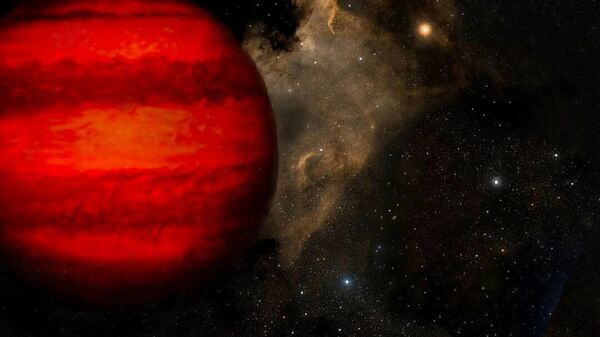An ensemble of citizen scientists have discovered 95 "cool worlds" close to the sun - celestial objects, known as brown dwarfs, that are larger than palnetsand are of a lighter weight than stars, a new study reveals.
Published in the Astrophysical Journal and on an arXiv.org preprint server, the research reveals that "previously unrecognized substellar neighbors to the sun" have been identified by the citizen scientist project 'Backyard Worlds: Planet 9'.
“These cool worlds offer the opportunity for new insights into the formation and atmospheres of planets beyond the Solar System", said the lead author of the study, Aaron Meisner, of the National Science Foundation’s NOIRLab. “This collection of cool brown dwarfs also allows us to accurately estimate the number of free-floating worlds roaming interstellar space near the Sun".
Archived data from the Nicholas U. Mayall 4-meter Telescope at Kitt Peak National Observatory (KPNO) and the Víctor M. Blanco 4-meter Telescope at Cerro Tololo Inter-American Observatory (CTIO) made the discovery possible.
According to the statement, some of the "newly discovered worlds" are among the lowest-temperatures discovered yet, including levels close to Earth and are "cool enough to harbor water clouds".
The temperatures of the newly found brown dwarfs are provided by NASA’s Spitzer Space Telescope. The Backyard Worlds researchers (approximately 100,000 worldwide) have found around 1,500 cold worlds close to the sun.
“This paper is evidence that the solar neighborhood is still uncharted territory and citizen scientists are excellent astronomical cartographers”, co-author Jackie Faherty of the American Museum of Natural History said in the statement. “Mapping the coldest brown dwarfs down to the lowest masses gives us key insights into the low-mass star formation process while providing a target list for detailed studies of the atmospheres of Jupiter analogs".
Despite the difficulty of finding brown dwarfs, a fair amount of information has been unearthed by researchers in recent years, such as the “vampire” white dwarf - named after its “sucking” the life out of a nearby brown dwarf - in January 2020.
In August 2018, a gigantic, glowing, "rogue" planetary-mass object was spotted, shocking scientists its size and the fact that it does not orbit a star.
NASA explains that brown dwarfs are the "missing link between gas giant planets like Jupiter and small, low-mass stars".
Brown Dwarfs are failed stars around the size of Jupiter, but have zero internal energy and create no visible light, which makes them difficult to identify.
Brown Dwarfs were first discovered in 1994 and later confirmed in 1995.




